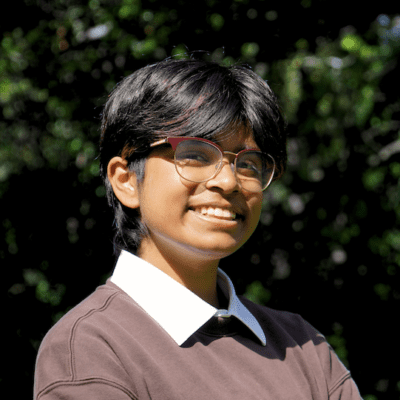Reyansh Sathishkumar L&S Math & Physical Sciences
Predicting Location of Retinotopic Maps through Neuroanatomical Data
A major goal of neuroscience is understanding how the anatomical structures of the brain support and affect function, and how these structures have evolved over time and influence cognition. The cerebral cortex is organized into complex folding patterns of sulci (grooves) and gyri (ridges), which can pinpoint functional areas. For many years, researchers have been manually labelling sulci and gyri. However, as more evolutionarily new and variable sulci are defined, there are higher chances of inconsistencies in labelling criteria and labels between labs. Manual labelling of sulci is also tedious and time-consuming. My project has two goals: creating an algorithmic way to create labels, and comparing the structure and function of these regions between species. In humans the region I will study is the gyral gap between the Intraparietal Sulcus and the Paroccipital Sulcus. In macaques, there appears to be a bump at this region, instead of a gyral gap. After isolating these regions, we will compare the regions to functional retinotopic maps to see if these functional areas can be predicted from anatomy.
Thank you to the Cognitive Neuroanatomy Lab!
Message To Sponsor
Thank you very much for the support this summer! My work this summer solidified my interest in entering research as a career path, and I learned so much and was able to focus wholeheartedly on research. This summer's experience was valuable to me, and I've become a much more independent and confident researcher, and it's been truly life changing. Thank you!